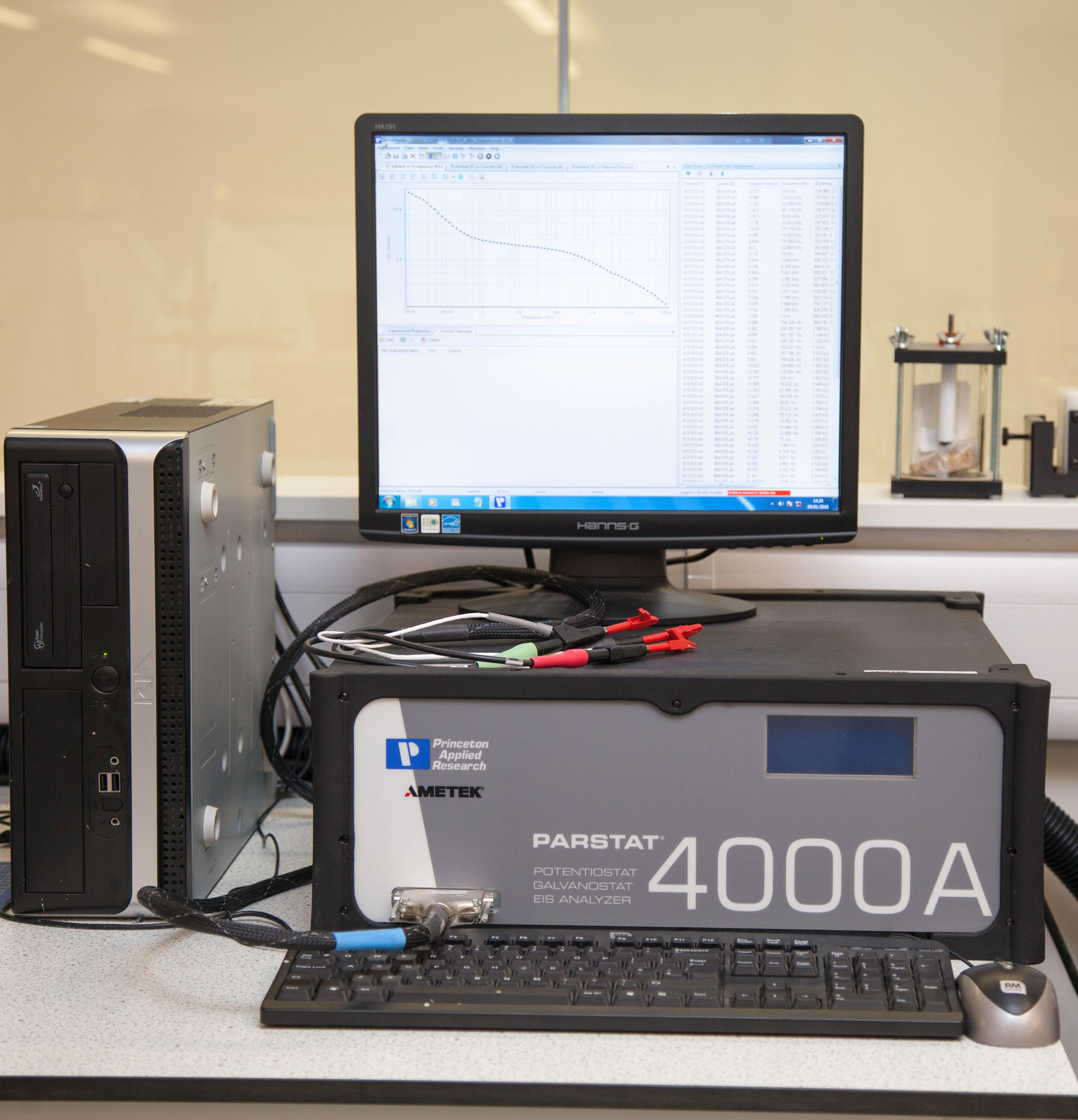Paint testing
Paint testing in MERI is performed by ac impedance combined with scanning electron microscopy, chemical analysis, and optical analysis adhesion testing as required.
The ac impedance technique measures the corrosion rate of a metallic substrate by passing current through a paint coating. In simple terms as the corrosion rate increases more current is generated.
MERI has several ac impedance units for performing electrochemical testing of this type, some of which are portable. The latest unit is shown below

Paint failure is a common problem in industrial situations. Often this is caused by poor surface preparation or lack of stirring of the paint prior to application. Paint adhesion can be measured by the HATE adhesive tester which measures the force required to remove a small circular samples of the paint in question (a flat sample is required to perform this test).
Adhesion testing is also commonly conducted by the cross hatch test.
If the paint is applied to an incorrectly prepared surface then adhesion and corrosion issues can follow. Very often traces of grease or oil are present on the surface of a metal and these can be identified as a cause of failure by scanning electron microscopy of the interface.
Paints can be supplied incorrectly, or be applied incorrectly and different batches of paints can occasionally be supplied to an inconsistent standard. If a paint is suspected to be incorrect then different paint samples can be tested using out thermal analysis techniques or FTIR spectroscopy analysis.
Click here for more information about Standard Test Techniques for Paints.
For more information please contact MERI reception on 0114 225 3500 or email meri@shu.ac.uk
